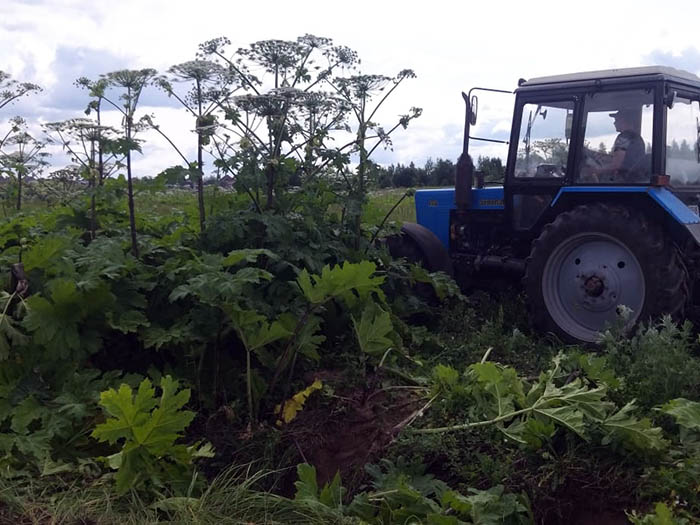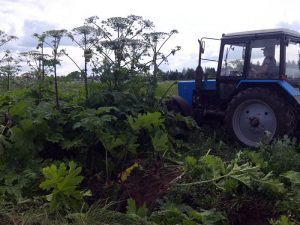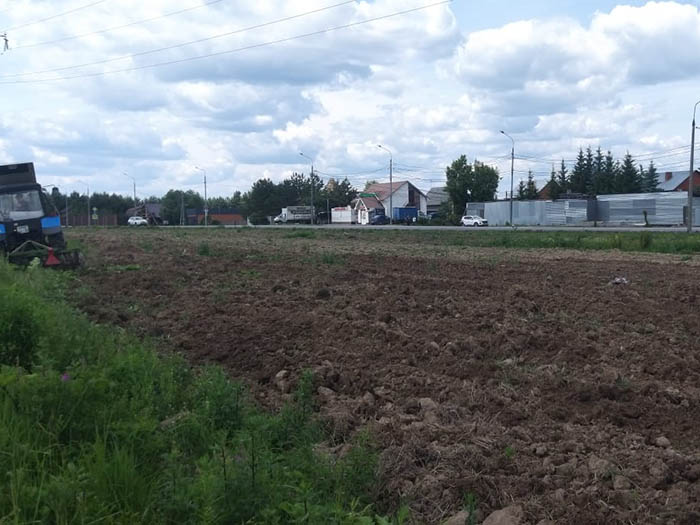Destruction of giant hogweed by disking


Invasive plants pose a threat to species that is often underestimated. At first glance, they may seem like simple weeds, but in fact they can cause enormous damage to nature, agriculture, and human and animal health.
Invasive plant, controlled plant, there is a list of them for each region. If the owner of the site finds that his land is inhabited by weeds, he will have to contact professionals and order weed removal. In Russia, this is most often Sosnowsky’s hogweed. In England – Giant hogweed. For the discovery of “plantations” of dangerous hogweed, there is an order to remove it, destroy it, and a significant fine if the order is not fulfilled on time.
Biological method, eco-friendly, without herbicides and chemicals – mechanical destruction of hogweed by disking the site.
Sosnowsky’s hogweed has virtually no pests and diseases, not yet. Therefore, it tends to fill the territory and displaces other plant species. This is in addition to the fact that it is poisonous and its juice causes serious burns when light hits the affected area of the skin or mucous membrane.
Disking leads to mechanical crushing, squeezing, mixing with the soil, the stems and roots of the hogweed ferment and do not sprout. However, the seeds are preserved in the soil for about 5 years and the treatment has to be repeated.
The main goal is to prevent the hogweed from throwing out seeds, so mechanical removal work by plowing and disking is carried out until the beginning of July, in cold summers – until the beginning of August. A cut umbrella with unripe seeds can ripen if the plant is not crushed.

Destruction of giant hogweed by disking

Destruction of giant hogweed by disking, good work
Invasive species, such as Sosnowsky’s hogweed (Heracleum Sosnowskyi) in Russia or giant hogweed in England, quickly take over territories, displacing native plants. Their powerful root system and high competitiveness make them virtually invulnerable in the natural environment. There are not many natural “enemies” and eaters of hogweed in nature, and biological methods with special fungi are rarely used.
Why is this dangerous?
For example, hogweed juice causes severe photochemical burns of the skin and mucous membrane. Biological and mechanical methods are preferable.
The use of pesticides near water protection zones, playgrounds, populated areas, parks, protected areas or protected natural complexes is prohibited or extremely restricted by law. In addition, landowners themselves are often unwilling to use pesticides for environmental safety reasons.
Therefore, mechanical and biological methods remain safer and more versatile for the destruction of hogweed and other invasive species.
If the land is heavily infested with hogweed, an effective solution can be:
Such treatment destroys the root system of the plant and prevents its restoration. It is recommended to repeat the treatment after a year to prevent seed germination and resumption of the population. In this case, it can be combined with planting aggressive perennial crops that suppress hogweed and form dense herbaceous vegetation.
In Russia, landowners are required to destroy hogweed. Failure to do so may result in a fine from regional inspections of the Russian Federal Service for Veterinary and Phytosanitary Surveillance or municipal regulatory authorities. Fines are provided for violating the order, which in some regions by 2025 may amount to: Up to €5,000. It depends on the area the plot is in, on the municipality.
A similar situation is in the UK: Giant hogweed is included in the official list of invasive species. Due to its widespread occurrence and lack of control, the owner faces fines and injunctions under the Wildlife and Countryside Act 1981.
In addition to the fine, the owner may be required to remove the thickets at his own expense within the specified time frame.
Ignoring an official regulation may result in more serious penalties, such as a ban on using the land, a lawsuit, or the transfer of the task of forced destruction of plants to specialized contractors with subsequent collection of costs from the landowner. Therefore, it is necessary to comply with the regulations in a timely manner in order to avoid unpleasant consequences and maintain the land in a usable condition.
Our company offers effective solutions for the control of Sosnowsky’s hogweed, Giant hogweed in Europe and other dangerous plants, including:
We guarantee pesticide-free work, safe for people, pets and the environment.
If you find hogweed (Heracleum Sosnovsky, Heracléum mantegazziánum) or other invasive species, don’t expect fines or lawsuits. Contact us and we will help you restore your property to a clean and safe state.